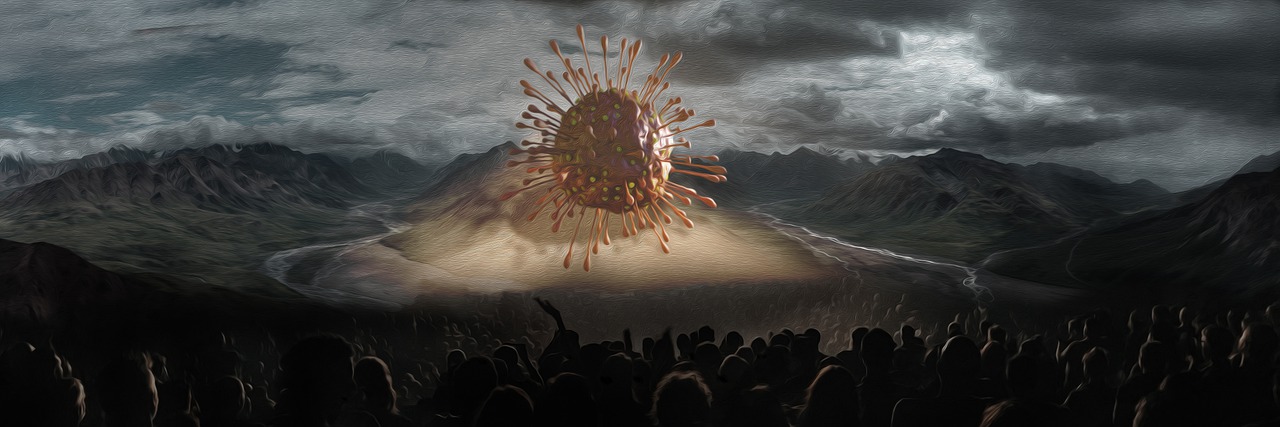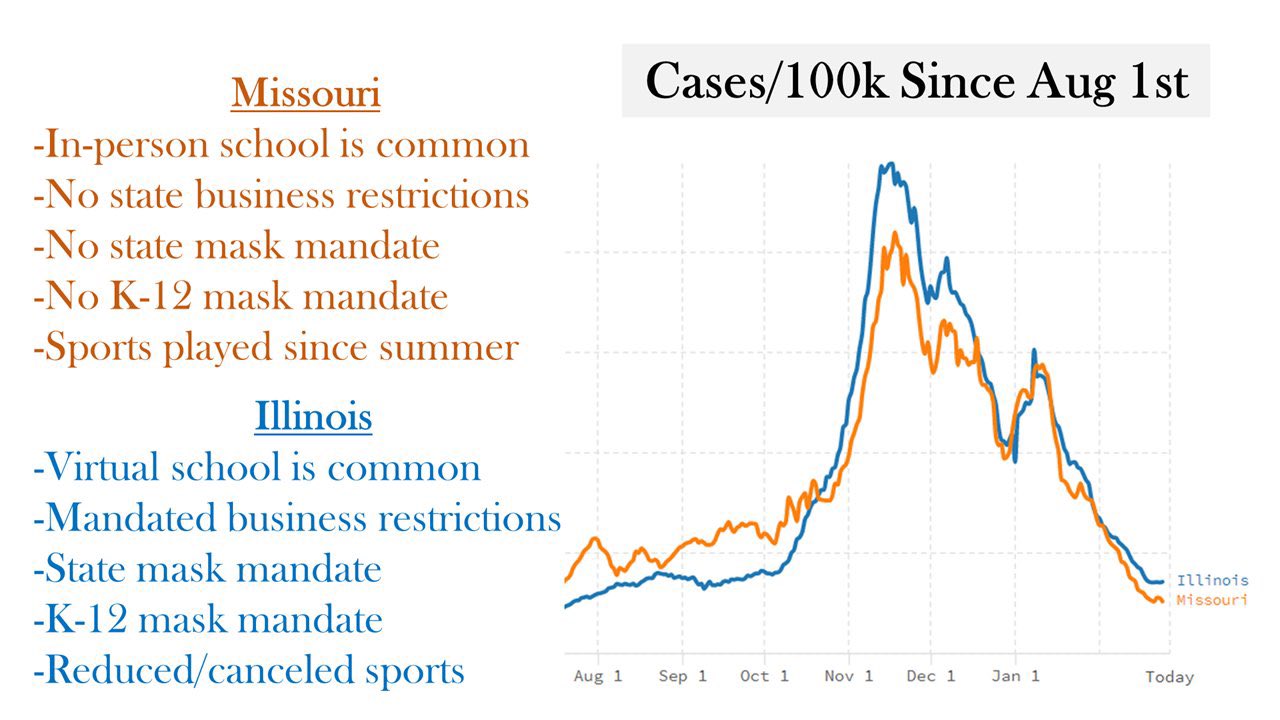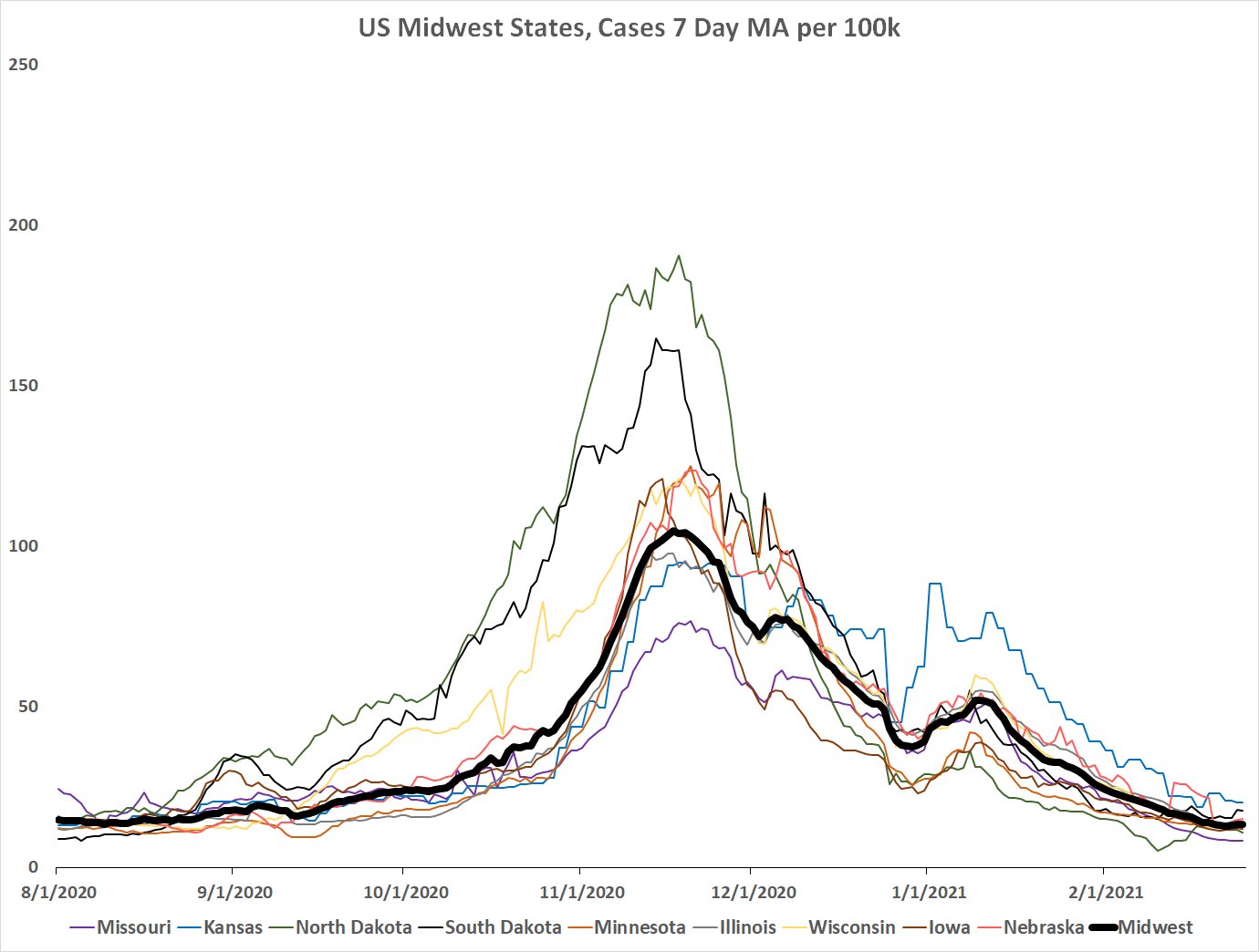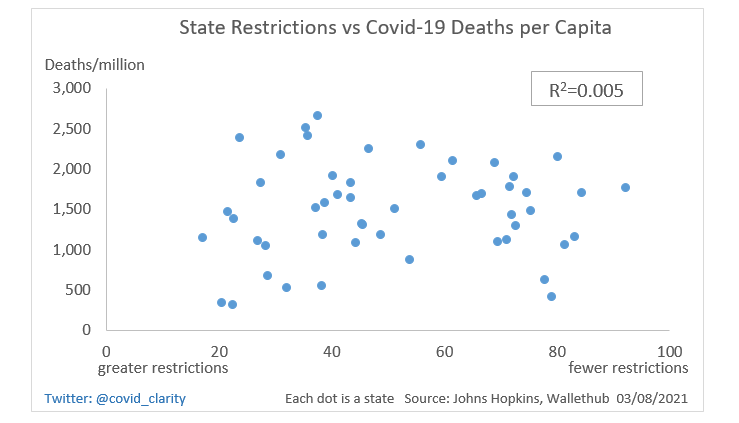The COVID-19 pandemic will forever serve as a sobering reminder for how effortlessly governments can command the unquestioned obedience of their constituents. Political actors, in conjunction with big tech and the corporate press, spent the better part of a year fraudulently framing the argument for various behavioral controls like mask mandates and business closures as the scientifically backed and morally upright position that any good, rational citizen would take in the name of preserving "public health." This line of thinking has become so thoroughly embedded in our culture that it is now widely accepted that any state, individual, or business that refuses to implement or adhere to forced business closures, mask mandates, gathering restrictions, or other behavioral mandates is de facto a science-denying enemy of public health, fully deserving of legal punishment and public ridicule.
Nowhere could this sentiment be more true than in St. Louis, Missouri where Acting Director of Health Fredrick Echols has been punitively shutting down businesses in an effort to enforce compliance with COVID-19 restrictions. The same goes for neighboring St. Louis County, whose citizens are suffering under the rule of County Executive Sam Page. Both men's unscientific decision-making, combined with the complaints filed to local authorities on behalf of private citizens happily ratting out businesses that refuse to reflexively bend the knee to government edicts, is perfectly emblematic of the national attitude toward COVID-19 mandates: comply or be treated as a menace to public health.
What Does The Science Have to Say?
It apparently does not matter to Echols, Page, and other bureaucrats what the data say about the effectiveness of mask mandates, business closures, capacity restrictions, stay-at-home orders, or any other behavioral mandate. What matters to them is that everyone fall in line and, ideally, profess an unwavering faith in the efficacy of mask mandates and social distancing guidelines. However, a true understanding of the data pertaining to the effectiveness of these mandates would require the immediate removal of all COVID-19 restrictions, none of which have done a single thing to keep the citizens of St. Louis, Missouri safe. If this city and surrounding areas truly wish to follow the science, their officials will pay close attention to the following data.
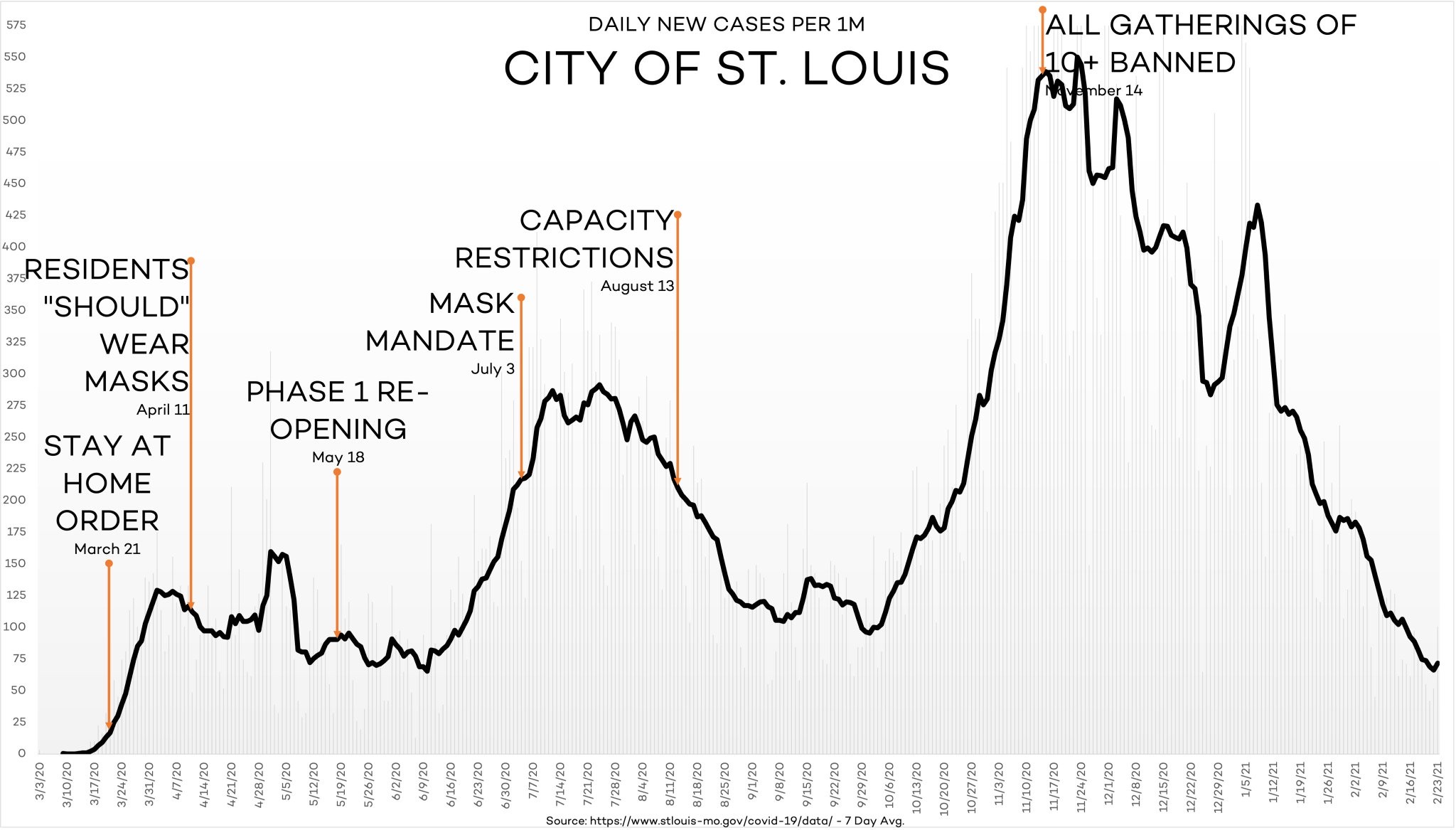
Despite having both a mask mandate and capacity restrictions in place at the end of summer, the city of St. Louis saw a massive explosion in cases starting in October—surely it is just coincidence that every other state in the country happened to experience a massive surge at the same time.
Invariably, the above chart will drum up the fraudulent excuse that people suddenly refused to comply with the city's mask mandate. To the contrary, mask data for the city of St. Louis show that public mask compliance has consistently remained above 90 percent since mid-September.
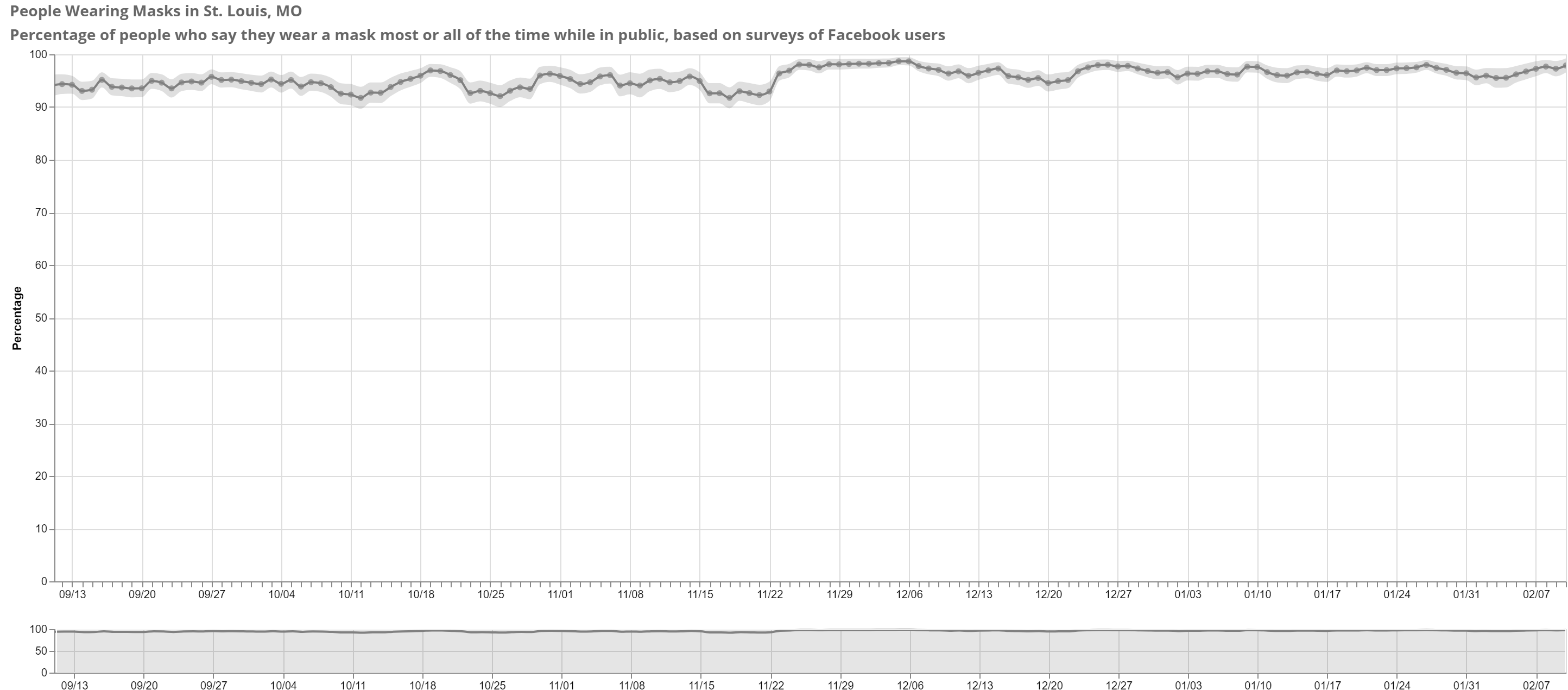
Maybe the citizens of St. Louis got together and decided that October was the month they'd stop caring about the virus. Well, not exactly. Mobility and social distancing metrics provided by the University of Maryland COVID-19 Impact Analysis Platform show no drastic behavioral changes at the start of October, which is denoted by the red line.

To lay the non-compliance narrative to rest, Google's COVID-19 mobility report as of February 28, 2021 show that St. Louis residents thoroughly outperformed Missouri as a whole in avoiding behaviors that supposedly fuel the spread of COVID-19, but nonetheless failed to alleviate the rate of growth accompanied by the October surge. In the following graphic, Missouri's numbers appear in red.

Based on an actual investigation of the data, it is abundantly clear that the political leadership in St. Louis has made no meaningful impact on cases in their city, but instead have needlessly shut down businesses and enforced punitive mandates under the guise of preserving "public health." For local authorities to simply get away with their castigatory and scientifically unwarranted behavior would be nothing short of criminal.
If Echols, Page, and their crews are still not convinced that they've failed miserably in preventing the spread of COVID-19 within their own city, data from surrounding counties might help them see that, yet again, there is no meaningful correlation between government mandates and case growth patterns.

Here we have three different counties with three very different levels of restrictions, yet they all follow nearly identical case growth patterns. In July, St. Louis County introduced a mask mandate and saw worse case growth in the following month than both Jefferson County and St. Charles County, neither of which had a mask mandate in place. Almost two months later, St. Louis County attempted an "enhanced" mask mandate that again did nothing to prevent the massive case spike in mid-October. Then in a last-breath effort near the end of November, St. Louis County proceeded to close indoor dining while Jefferson County introduced a mask mandate and St. Charles County continued to do nothing. Miraculously, despite three very different levels and timings of mitigation strategies, all three counties saw their cases plummet at the exact same time —the jump in cases around January 8 is likely due to holiday and winter storm reporting lag. Most significantly, note how the blatant lack of restrictions in St. Charles County had absolutely no impact on the intensity or timing of their case growth patterns relative to Jefferson and St. Louis County.
Additionally, the significantly different levels of mask compliance across these three counties had no bearing on the timing or intensity of case growth rates.

While there seems to be a happy correlation between peak case count and mask usage, there is no good explanation as to why St. Louis County, the most restricted of the three counties, which also had the highest level of mask compliance, showed worse numbers than St. Charles County, the land of no restrictions, from mid-January through the end of February. Even more, why did St. Charles and Jefferson Counties, each with far worse levels of mask compliance through October, experience practically identical case growth patterns relative to St. Louis County? If the science on masks were settled, what good explanation is there for either of these trends?
Moreover, it would appear that restaurant visits are another useless predictor of COVID-19 case patterns.
From April through July, despite Jefferson and St. Charles Counties being far more active in the restaurant scene than St. Louis County, St. Louis County suffered consistently higher cases per million. Additionally, despite no drastic changes in the number of restaurant visits immediately prior to and during October, all three counties still fell prey to the massive October surge at the exact same time and with practically identical growth rates. Also, take note of the impact of St. Louis County's mid-November indoor dining closure on the restaurant business. It seems that a majority of this business was just displaced to neighboring counties—Jefferson County and St. Charles County, for example—whose economies were more conducive to the restaurant industry. Most importantly, the uptick in restaurant visits in St. Charles and Jefferson County during this time also had no effect on their case growth rates relative to St. Louis County. In fact, even as restaurant visits increased in Jefferson and St. Charles Counties from December through mid-January, cases continued to plummet alongside St. Louis County at a nearly identical rate.
It is plain as day that neither the level of restaurant activity, mask compliance, social distancing compliance, nor the number and timing of COVID-19 regulations had any bearing on case growth rates in any of these areas. Echols' unscientific, freedom-destroying mandates—particularly his punitive consent order levied against the owners of The Wheelhouse and their 100+ employees—was either the result of a gross misunderstanding of simple summary statistics and basic trends, or a vengeful and criminal campaign against those who refused to reflexively submit to government mandates.
What unelected bureaucrats like Echols are sure to leave out is any discussion of seasonality as a driving factor behind case fluctuations. Research published in Evolutionary Bioinformatics shows that case counts and mortality rates are very strongly correlated with temperature and latitude, neither of which even the most pretentious politicians would claim the ability to manipulate.
If you look at the COVID-19 seasonality trends for the United States as a whole, which take into account both tropical and temperate climates, you will quickly find that the cases patterns depicted below match quite nicely with the case patterns for the city of St. Louis and surrounding counties presented above.
The Hope-Simpson seasonality model for influenza depicted above has actually been quite accurate in mapping COVID-19 trends to tropical and temperate climates. However, for the government officials and unelected bureaucrats who needlessly ruined livelihoods and brought social life to a depressing standstill for the better part of a year, seasonality cannot, must not, be the explanation; it would mean that the past year's worth of politically charged and economically destructive behavioral mandates were all for naught.
State and National Metrics Further Implicate Echols' and Page's Punitive Actions
The claim that government intervention has done anything to slow the spread of COVID-19 in the city of St. Louis and surrounding areas has no scientific backing whatsoever. This claim becomes even more dubious if we look at similar metrics from Missouri's neighboring states, or at least those with similar climates. To start off, here are the population-adjusted case trends for Missouri and Illinois
The establishment-approved narrative has no explanation for why Missouri and Illinois, the latter being the much more restricted state, experienced almost identical case growth patterns despite drastically varying levels of intervention. Illinois also had greater mask compliance, less time spent at away locations, and fewer population-adjusted bar and restaurant visits, which evidently had not even the slightest impact on cases relative to Missouri. In fact, Iillinois had a higher peak case count and is underperforming Missouri to this day. This is sure to generate some crickets among the COVID-19 doomers who pride themselves on "following the science."
Now, if you really want to see your "science-following" friends grasping at straws in defense of COVID-19 behavioral controls, show them the following graphic of midwestern states' case trends.
This really shouldn't come as a surprise, but, yet again, despite nine different levels and timings of COVID-19 restrictions, all states experienced nearly identical growth patterns. Note particularly that Iowa, the state that doesn't care if you live or die, remained under the midwestern average for cases since December and hardly had the worst peak case count. Does Echols think that his belligerent retaliation against the owners of The Wheelhouse is going to accomplish something that nine other seasonally congruent states could not?
Let's zoom out even further and take a look at some of the national-level data that further implicate Echols' punitive actions.
The above graphic represents what is likely the most sacrilegious assault on the Church of Covid. It blasphemes the divinity of the mask by rejecting the belief that mask mandates and mask compliance have been effective in slowing the spread of COVID-19. As a matter of very simple fact, the above chart shows zero correlation between mask usage and the spread of COVID-19.
Additionally, there is absolutely no correlation between the intensity of a state's restrictions and deaths per capita.
Again, if what we were told about this virus were true, then this graph should unambiguously slope upward, indicating that fewer restrictions result in greater casualties. An R2 of 0.005, however, very clearly indicates that state and local governments have made no impact on the course of the virus through behavioral controls.
What is more, new deaths, new cases, and new hospitalizations have also been plummeting since January despite grim warnings of new variants and millions of people having gathered together for Super Bowl LV, neither of which caused the slightest blip in the rate of decline for cases and hospitalizations.

Lastly, a depiction of all fifty states' case growth rates tell us what your government officials will never admit: despite fifty different timings and levels of intervention, each state exhibited a highly similar case patterns.
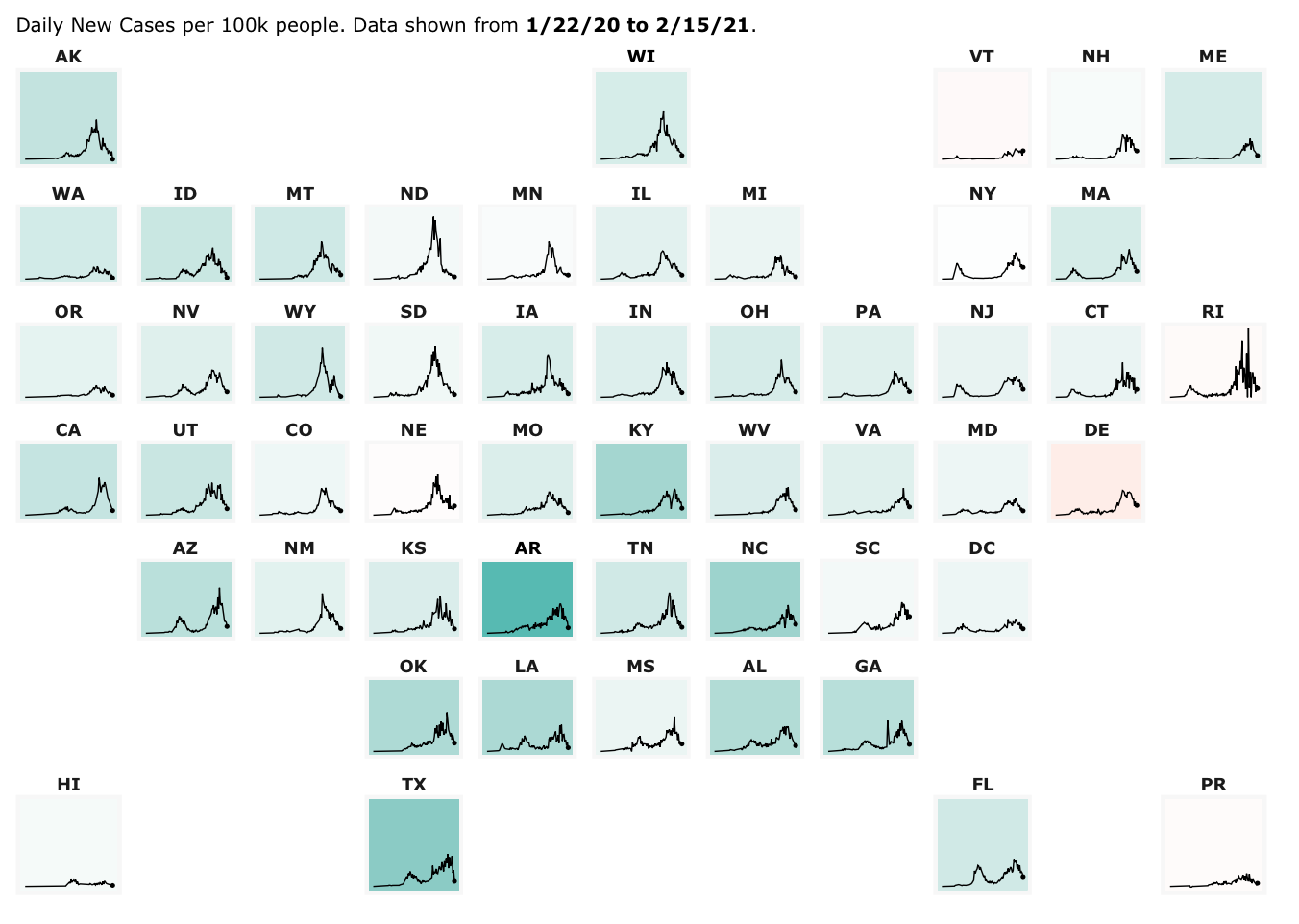
Each state, without deviation, experienced a seasonal bump in cases early to midway through the year followed by a much bigger seasonal surge in cases during winter months. Are similar case patterns across fifty diverse states indicative of governments that are capable of influencing the course of COVID-19? Hardly. Seemingly every attempt to socially engineer this virus out of existence has failed.
Place Yourself on the Right Side of History
Years from now, nobody will recognize the government's response to the COVID-19 pandemic as anything other than the greatest public health failure in human history. None of the recommendations from our political leaders and health experts for how to beat this pandemic have worked, and we have an entire year's worth of local, statewide, national, and international data to prove it.
The return to normal life is promising, however. "Neanderthal" states like Texas and Mississippi, along with West Virginia, Arizona, Wyoming, and Connecticut, are beginning to let business operate a full capacity and/or removing statewide mask mandates altogether, returning basic freedoms to their constituencies who have all along been perfectly capable of assessing social risk without the guidance of their sainted health officials. The Wall Street Journal recently published an article saying that Ron DeSantis of Florida can now claim vindication given his success relative to California and New York.
While many states are on the proper path towards normalcy, the vast majority have a long way to go. And for most individuals, until their governor, mayor, an official in the Biden administration, or somebody in a white coat appears on television granting them the ability to resume a life free from masks and social distancing guidelines, they will continue to cling to their safety blanket of social regulations that have had no meaningful impact on the spread of COVID-19.
In the meantime, we can remember and take our business to those states, cities, and towns that preserved individual liberties and refused to ruin the livelihoods of thousands; we can continue to promulgate the overwhelming amount of data at our disposal which lay the mainstream COVID-19 narrative to rest; and we must become emboldened to never again relinquish our most basic freedoms so quickly and so peaceably at the ruling elite's first invocation of public health.

